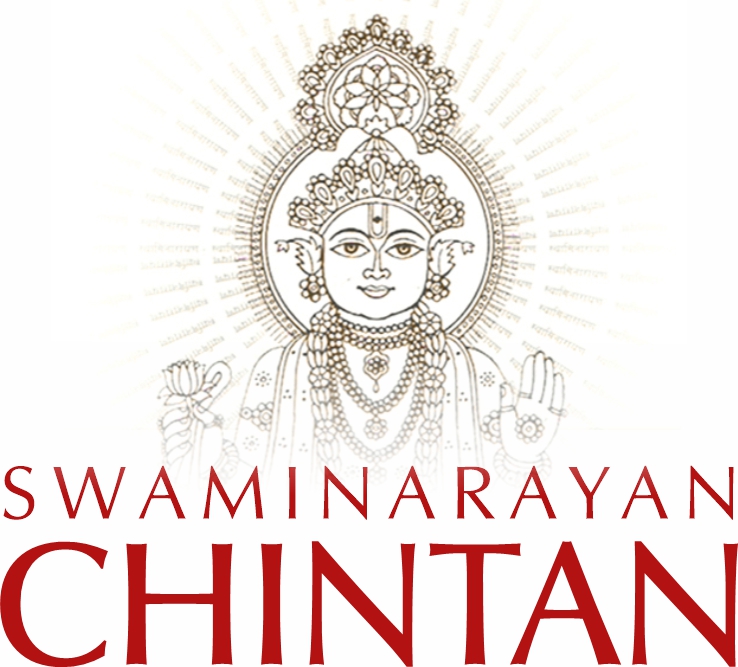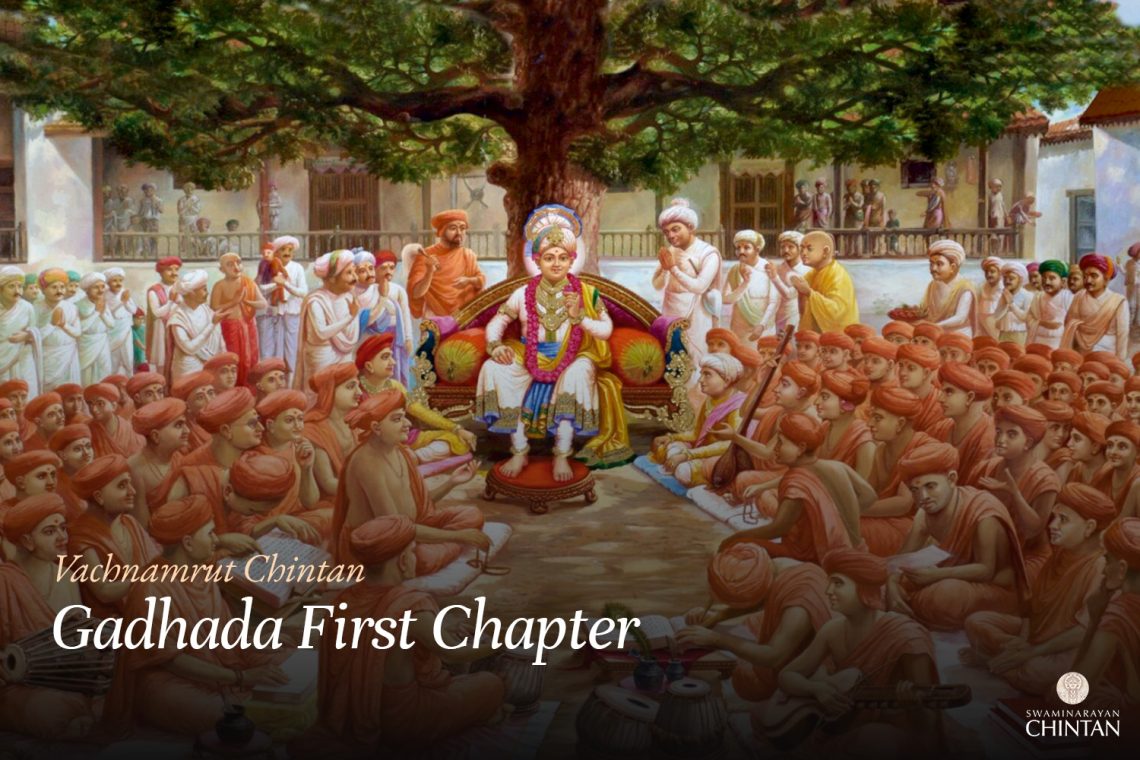Central Insights:
- How to extremely please God?
Key Points:
- Take the decision to sit in the presence of Akshar Muktas.
- Uninterrupted contemplation.
- Discard materialistic relationships.
- Dharma, Gyān, Vairagya and Bhakti.
Explanation
Shreeji Māharāj has mentioned in this Vachanāmrut that a devotee, who is keen to please God, should firmly practice Dharma, Gyān, Vairagya and Bhakti. This is known as single-mindedness. Remembering the Murti of God in each and all the activities, discarding relationships with bodily relatives, developing firmness in Aksharbhav (considering oneself as akshar, distance from three bodies) and firm determination to go to Akshardhām, with this God becomes extremely pleased.
As per this Vachanāmrut, Shreeji Māharāj has said that one who has a desire to please God needs Dharma, Gyān, Vairagya and Bhakti. Māharāj has frequently mentioned these four means for achieving Ekāntik in the Vachanāmrut. Therefore, these four means are the principles of the Vachanāmrut and Māharāj. The question that arises while we ponder over this Vachanāmrut is, why didn’t Māharāj end this Vachanāmrut after describing these four criteria?
Even if Māharāj continued His discourses through discussions surrounding how to perceive the Murti of God, remembering His image constantly, detaching the body from itself and its relatives will allow the person to become a form of Akshar and take the place in the group of the Aksharmuktas. The question that arises is, are there other means to please God other than the four criteria? If so, should they be used in conjunction? If not, which is more important? It should be considered.
If we closely examine every discourse in the Vachanāmrut, to please Māharāj, the mindset of the individual should be such that they want to be firmly placed in the midst of the Aksharmuktas in Akshardhām. Māharāj has said in this Vachanāmrut, that “Akshar has two Swarup (images): one is the formless and uniform all-pervading universal spirit. It is called Chidākāsh or Brahma-mahol, the other image is engaged in the service of Lord Purushottam Nārāyan.” The devotee who has reached Akshardhām acquires a similarity of nature with Akshar and remains engaged in the service of the Lord constantly. One should make the decision that they have to be placed amid the group of Aksharmuktas. What is required for this? The answer to this is that one who wants to be placed amid the Aksharmuktas, must contemplate Māharāj’s Murti very eagerly and uninterruptedly.
Māharāj says that “a devotee of God must remember God even while eating, drinking, bathing, washing, walking, sitting and doing all activities. When the mind is undisturbed, it should meditate over the divine Murti of God and concentrate on it.
If the mind is disturbed by conflicting ideas, one should perform Sānkhya thoughts which destroyes those thoughts. The materialistic world makes disturbance, the primary relations are of body and bodily relative. One should perform thoughts of Sānkhya, by which attachment to the body and bodily relatives are discarded.
How can Sānkhya thoughts be performed? Māharāj has mentioned the reality to us that, who is not our relative? This means everyone is our relative whether in this present life or any other. Disturbances are removed by discarding attachment to body and bodily relatives through Sankhya thoughts. Disturbance of conflicting ideas can not be removed in a short period of time. Therefore, to remove them immediately and entirely, one should take shelter and help of Dharma, Gyān, Vairagya, and Bhakti accompanied with knowledge of the greatness of God, by which that can be possible hastily. Furthermore, the benefits of this are that Māharāj becomes pleased with devotees who practice this. Though God is pleased even by little effort, one who wants to please God extremely should live as mentioned in this Vachanāmrut.
Glossary
| Aksharbhav – State of Akshar Considering oneself as Akshar and detaching from bodily identity. |
| Akshardham – Divine Abode of Bhawagan Swaminarayan |
| Aksharmuktas – Liberated Souls living in Akshardham |
| Bhakti – Devotion Loving and selfless worship of God. |
| Chidakash – All-Pervading Space |
| Dharma – Righteousness |
| Ekantik Dharma – Singleminded Devotion |
| Gyan – Knowledge |
| Murti – Divine form of God Refers to Bhagwan’s physical or imagined divine form, which provides joy and spiritual connection during contemplation. |
| Purushottam Narayan – Supreme God |
| Sankhya – A school of philosophy A philosophical system that explains the nature of the soul and the universe, emphasizing the distinction between the soul (Atma) and the material world. |
| Vairagya – Detachment |

